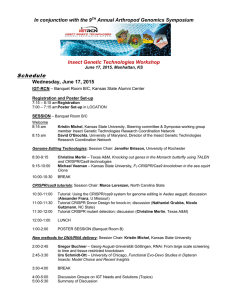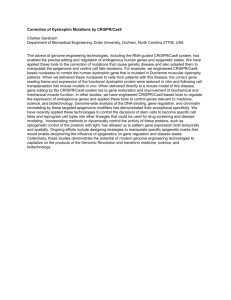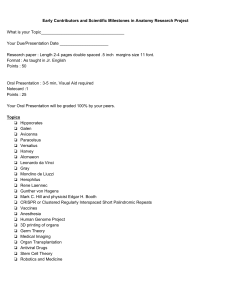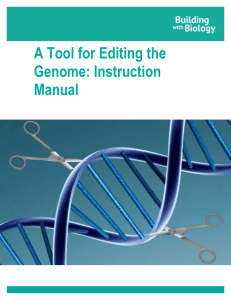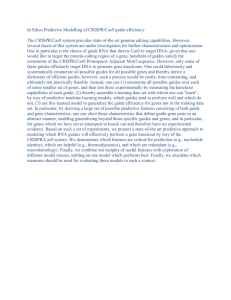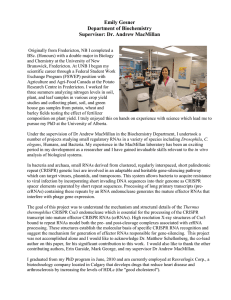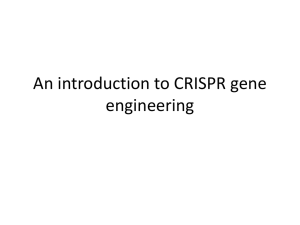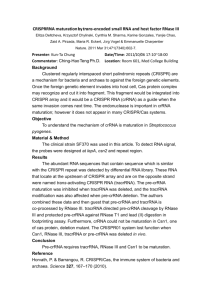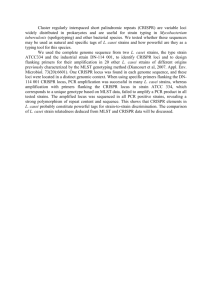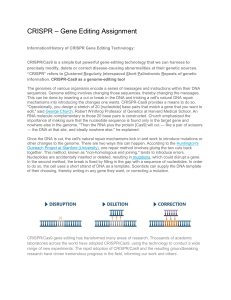CRISPR-Cas9 Genome Editing – a Game Changer in Genetics
advertisement
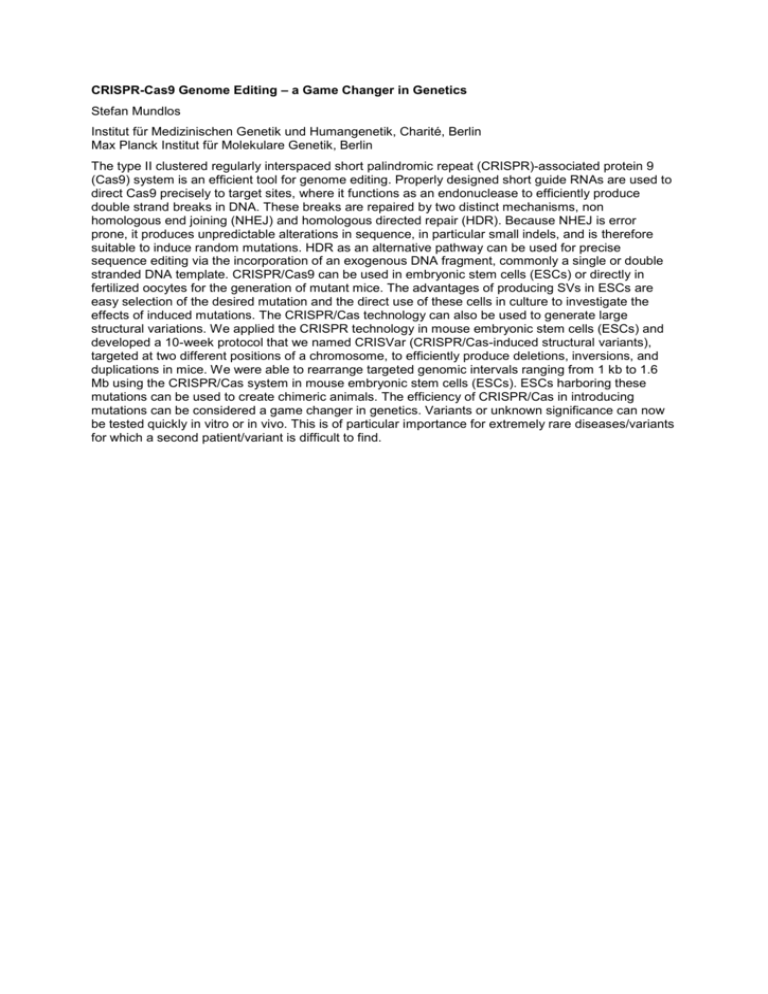
CRISPR-Cas9 Genome Editing – a Game Changer in Genetics Stefan Mundlos Institut für Medizinischen Genetik und Humangenetik, Charité, Berlin Max Planck Institut für Molekulare Genetik, Berlin The type II clustered regularly interspaced short palindromic repeat (CRISPR)-associated protein 9 (Cas9) system is an efficient tool for genome editing. Properly designed short guide RNAs are used to direct Cas9 precisely to target sites, where it functions as an endonuclease to efficiently produce double strand breaks in DNA. These breaks are repaired by two distinct mechanisms, non homologous end joining (NHEJ) and homologous directed repair (HDR). Because NHEJ is error prone, it produces unpredictable alterations in sequence, in particular small indels, and is therefore suitable to induce random mutations. HDR as an alternative pathway can be used for precise sequence editing via the incorporation of an exogenous DNA fragment, commonly a single or double stranded DNA template. CRISPR/Cas9 can be used in embryonic stem cells (ESCs) or directly in fertilized oocytes for the generation of mutant mice. The advantages of producing SVs in ESCs are easy selection of the desired mutation and the direct use of these cells in culture to investigate the effects of induced mutations. The CRISPR/Cas technology can also be used to generate large structural variations. We applied the CRISPR technology in mouse embryonic stem cells (ESCs) and developed a 10-week protocol that we named CRISVar (CRISPR/Cas-induced structural variants), targeted at two different positions of a chromosome, to efficiently produce deletions, inversions, and duplications in mice. We were able to rearrange targeted genomic intervals ranging from 1 kb to 1.6 Mb using the CRISPR/Cas system in mouse embryonic stem cells (ESCs). ESCs harboring these mutations can be used to create chimeric animals. The efficiency of CRISPR/Cas in introducing mutations can be considered a game changer in genetics. Variants or unknown significance can now be tested quickly in vitro or in vivo. This is of particular importance for extremely rare diseases/variants for which a second patient/variant is difficult to find.
